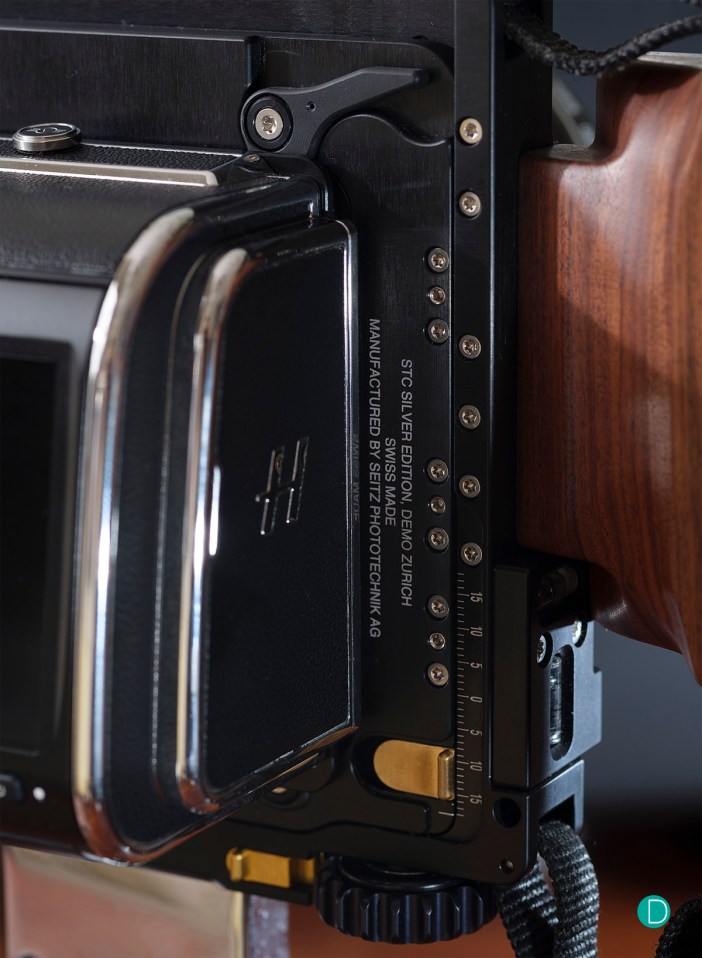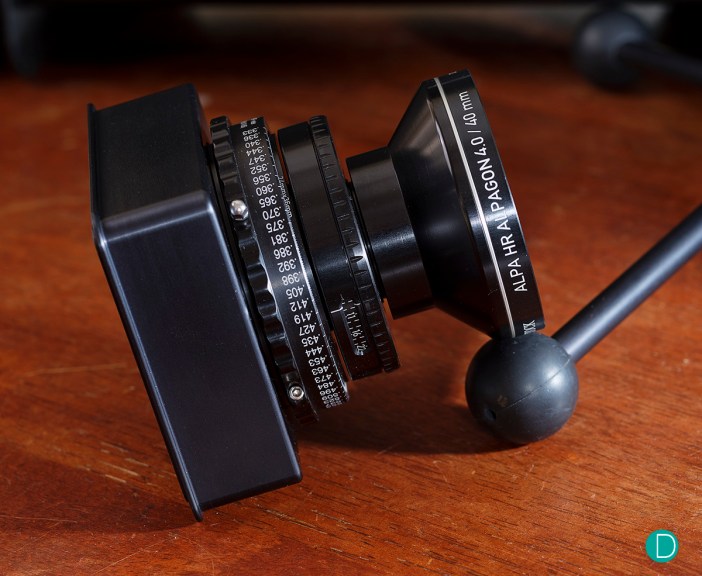We were offered to try out the new Alpa 12 STC Silver Edition by Alpa of Switzerland. Of course we jumped on it! The package arrived just before Christmas 2022, and this is our review of this magnificent camera.
Review: new Alpa 12 STC Silver Edition
The ALPA 12 STC Silver Edition is available at the professional price of CHF 28,800. Limited edition of 50 pieces.
We carried news of the announcement of the Alpa 12 STC Silver Edition with pricing details and our commentary in this article here. In that article, we talked about the Alpa heritage and some details of the new camera.

The body: Alpa 12 STC
The base camera is the Alpa 12 STC – the STC stands for Stitch Travel Compact. And the Silver Edition is a special package of the STC with the magnificent Alpagon/Rodenstock HR 4.0/40mm lens with HPF (Alpa’s high precision helicoid focusing system) and the Hasselblad CFV II 50C digital back. Also included as part of the package is a digital cable trigger, a hardwood grip and silver chrome hardware – the tripod mount and lens cap and a Pelican styled internally padded hard travel case. In the commercial version of the STC Silver Edition, the CFV II 50C comes with the 907 body as well as the complete packaging for the Hasselblad, but for our review sample, we received only the demo set which did not include the 907 body.

The base is a very simple aluminium plate, machined to extreme precision. The plate is perfectly parallel (very important for critical focus) on all sides with rounded corners. It features two sets locking mechanisms for attaching a lens and a back. The two levers on each standard lock in the lens on the front, and the digital back on the rear. The machining of the is absolutely top notch, and the camera looks very beautiful, especially with the wooden grip, which is ergonomically sculptured for a nice hand hold. I attached my own hand strap to the grip, just to ensure that I don’t drop the camera as a precaution. I do this to all the cameras I use but the grip is secure enough on its own.

Shown below is the view from the front with both the levers in the open position, ready to accept the lens and back. The silver tripod foot is part of the Silver Edition, but the black one which I attached across from the grip is an add on. Both are also beautifully machined, and do an excellent job keeping the camera in place, locked to the tripod head. Both come with non-twisting locating pins, and have hex screws which are captive. This saves the hassle of losing these little screws.

The body is built with the rear standard on a sled on rails which can move 18mm on either side of center. The mechanism are equipped with detents to click in at the center and both extremes. This helps locating these positions easily without fuss. This mechanism slides is very smooth to operate. A knurled thumbwheel moves a screw mechanism is used small incremental changes to the sled location. The thumbwheel is very smooth and requires only a light touch to operate. But the feel of is very positive, and the sled can be moved with very high precision to any position where it stays without backlash or need of a locking system. A scale marked in millimetres with numerals for the centimetre marks are located on the body and location markings on the sled allow the amount moved to be recorded. A locking mechanism which, when unlocked, disengages the fine adjustment screw, and allows the back to be smoothly slide quickly from both extreme positions for stitched images.

And when precise movements are required, the mechanism can be locked and adjustments can be made via the thumbnail. A separate lock mechanism disables the thumbwheel and prevents accidental movement. Precise rise and falls are essential for architecture photography to keep vertical lines straight, and this was my key use case for the STC.

The precision, yes you have seen and will continue to see this word being used frequently is superb. The fit and finish is top level. If you think a Leica has excellent fit and finish, the Alpa is another category altogether. Each part, each component is carefully thought out, and beautifully executed. As noted in the photograph above, the camera is not manufactured by Alpa, but for them by Seitz, and machined out of solid anodised aluminium blocks. But the entire design, the mix and match compatibility with all the components are work together seamlessly and conceived by Alpa.

Digital back: Hasselblad CFV II 50C
The digital back is the Hasselblad CFV II 50C, which we reviewed in detail in our Hasselblad 907 article. And the Silver Edition comes with this back with the HAA adapter. The Alpa 12 STC body, however, can be used with the appropriate Alpa adapter with any other digital back, including those from Phase One and Fujifilm GFX, or even for film duties with a 120 roll film back. We also tried it the Phase One IQ 3100 digital back and got fabulous results.

The back has a 50Mp 44x33mm CMOS sensor made by Sony. format sensor measuring 44mm x 33mm. In our review of the 907, we found the CVF II 50C to be capable of excellent results.
The lens: Alpagon/Rodenstock HR 4.0/40mm
The lens selected for the Silver Edition is the magnificent Rodenstock HR 4.0/40 lens. This is a truly excellent lens, which has superb performance right from wide open at f/4 right up to f/32, though optimal from f5.6 – f8. The lens is known for excellent optical quality. It is very sharp at all apertures, and incredibly sharp at the optimal apertures. It has neglible distortion, very good contrast and colours. The MTF and technical measurements look like it came right off a theoretical textbook!

The lens is mounted on the high precision HFP focus rings. The lens is designed without focusing mechanism, but comes with a built in iris. And to focus the lens, an Alpa helicoid system is used. Alternatively, the lens can be mounted on the front standard of a bellows system and focusing can be achieved with bellows movement. The HPF offers a very high precision and convenient way of setting focus. For example, a high precision laser rangefinder can be used to measure subject distance from the sensor plane to the subject, and there is absolute confidence that focus will be achieved by setting the HPF accordingly. Though in my practice, I prefer to zoom in via the Liveview of the digital back to ensure critical focus is nailed. The scale runs from infinity to 1.06m for the first 5 degrees of turn, and from then in what seems like a logarithmic scale to the closest focus distance of 0.484m. The feel of the focus mechanism is superb. Smooth does not even begin to describe it. The ring moves effortlessly, and stops when needed without backlash, allowing high precision on the focus set. A very good feature, but one which is perhaps somewhat a bit wasted on the 40mm ultra wide lens like the HR 4.0/40. If we set the lens to a working aperture of f/7.1 (midway in the optimal range), the lens set at hyper-focal of 5.9m will allow everything from 2.97 to infinity to be in focus. And for this lens, covers almost 95% of its use case for me.

The lens is not mounted with a shutter, and in the STC Silver Edition, the shutter used is the electronic shutter in the digital back. This works very well for still subjects or when the camera is not moving, but will give rolling shutter effects when either the subject or the camera is moving fast. Thus in its use case for architecture and street scapes, this is almost the ideal camera.

The lens also has a wide coverage allowing the full 18mm shifts in both vertical and horizontal directions. Again making the case for the perfect camera for architecture and streetscape work. At full shift, the lens will vignette, and the digital back will introduce colour shifts. This is an effect due to the non-infinitestimal size and depth of the sensor pits. When used with ultra wide lens, the light striking the sensor pixels will not be properly filtered by the Bayer filter and cause this colour shift. This phenomena occurs in all digital sensors and not on film. I will cover this in more detail in Part 2 of this article. Fortunately the fix is not difficult, and I will also describe it then.
Continued in Part 2
In Part 2 of this review, I will cover use cases. Most of my use case is for architecture photography, and cityscapes. However, I will also cover its use as a street camera – the 40mm lens on the CFV 50C sensor is about 20mm in full frame, so its quite suitable…I give it a try and a go. And of course, sample images from this magnificent camera, with my concluding thoughts.




1 Comment
Pingback: Review: new Alpa 12 STC Silver Edition Part 1 – Horopedia.ch